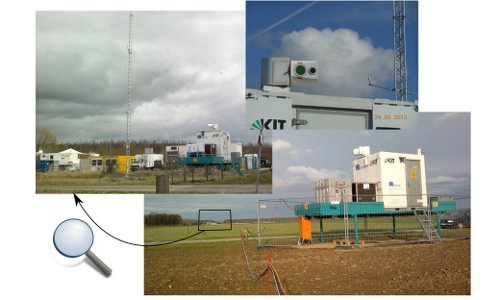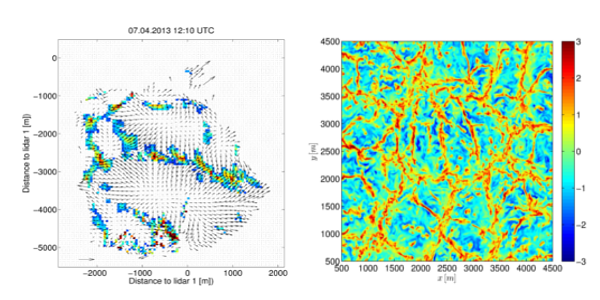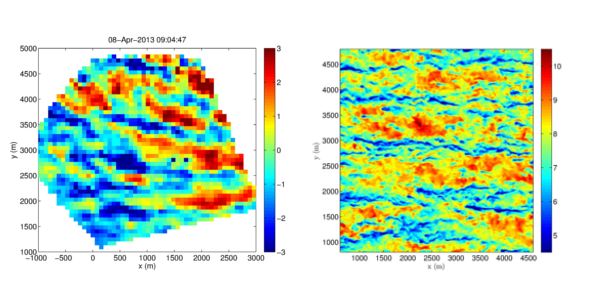KIT Young Investigator Group "Exploring coherent structures using Dual Doppler lidar systems (EDDy)"
- Contact:
Katja Träumner
- Funding:
KIT Young Investigator Group
- Startdate:
10/2010
- Enddate:
09/2014
In this project a new measurement approach using Dual Doppler lidar to detect coherent structures is developed and applied. Innovative virtual measurements in a Large-Eddy-Simulation (LES) are used to do feasibility studies and to implement objective algorithms to locate the structures in the wind field. Atmospheric measurements are carried out with the Doppler lidar systems of the KITcube.
Based on the real world measurements, we focus on the following questions:
- Which coherent motions can be observed in the atmospheric boundary layer? What forms do exist?
- What dependencies arise in connection with the stability of the atmospheric stratification and the background wind?
- What mechanisms cause the formation of coherent motions?
- How do these structures influence the turbulent transport processes in the boundary layer?

Virtual measurements are "measurements" in a model environment, which are generated by selecting and averaging the wind information from a turbulence resolving simulation in such a way as a lidar, with its specific measurements characteristics (pulse shape, pulse width, sampling rate, ...), would measure along its beam.

Measurement set-up during the field campaign HD(CP)2 in Jülich, Germany. The two "WindTracer" systems were located approximately 2.5 km away from each other and did a synchronized coplanar scanpattern parallel to the earths surface.

Organization during calm situations: the convergence zones in the measured wind field (left) as well as the vertical wind in the LES PALM (right) organize in cell like structures.

Organization during windy situations: the horizontal wind field organizes in bands of enhanced and reduced wind speed which elongate and align in wind direction (so-called streaks): left - measured wind field, right - simulated wind field.
